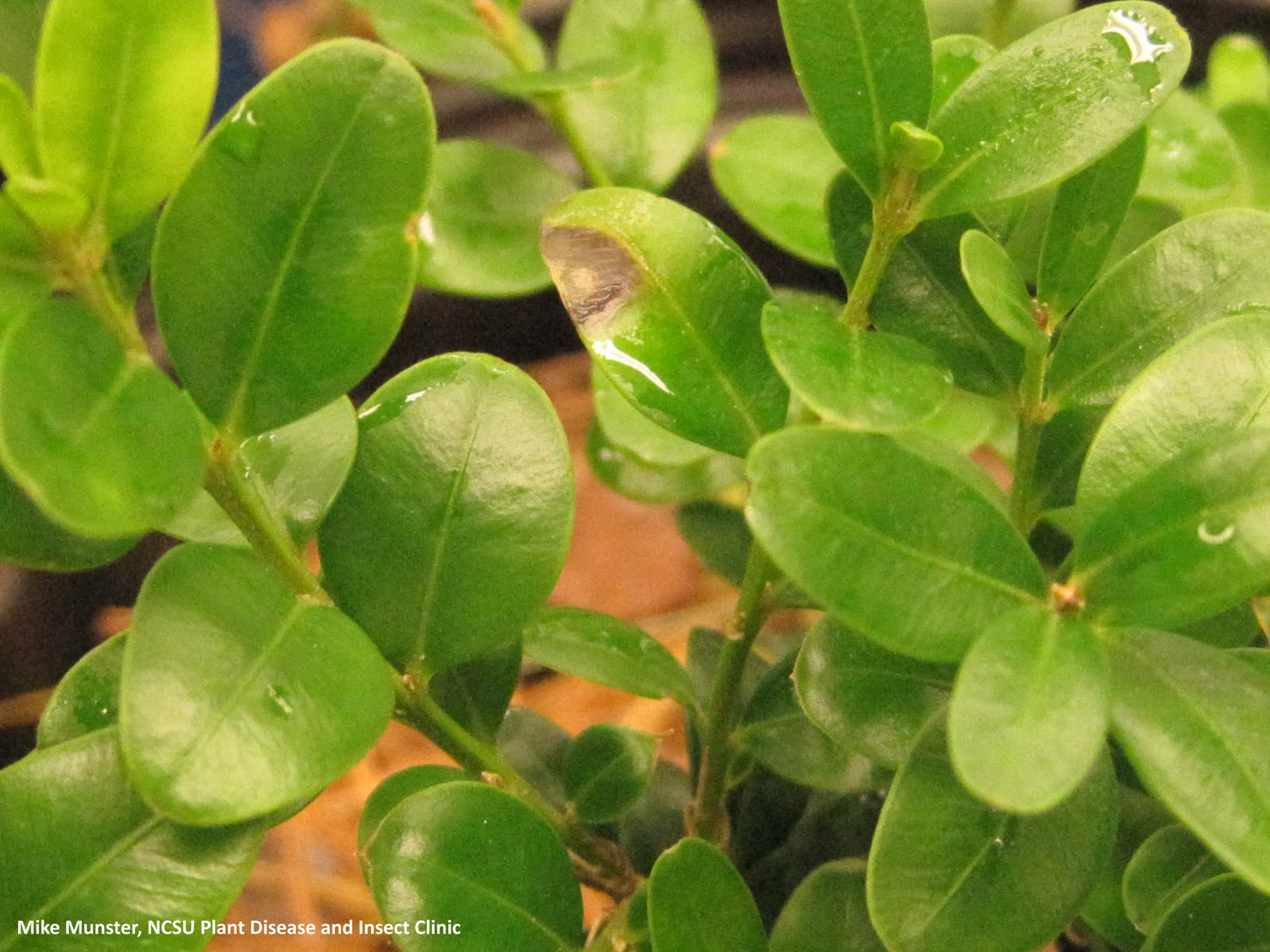You may have heard that Boxwood Blight has recently been detected in North America. To bring the nursery industry up to date, Craig J. Regelbrugge, ANLA, held a conference call last week with the State Associations to discuss the issue. CANGC staff participated on the call and will continue to monitor this issue and provide updates as they become available. The call was started with some background information; Boxwood Blight is a pathogen first described in U.K. in mid 1990’s, but now can be found throughout most of Europe as well as New Zealand as of 2002.
In recent months Boxwood Blight has been detected in North America in the states of CT, MA, RI, NY, PA, MD, VA, NC, and OR, and in a province of BC. In some cases detections have been in nurseries only, in others, in landscape settings. Generally, affected states have moved quickly to implement response measures in affected nurseries. At the time of the call it had not been detected in California. On a slightly positive note, the blight is NOT a threat to natural/environmental plant resources, or important non-nursery agricultural crops. It is a nursery and landscape issue. That said, boxwoods are a major nursery crop and an iconic landscape plant. Of note too is that one of the pathways for the long distance spread of the pathogen is infected plant material.

Boxwood Blight Leaf Spots
There are some important steps you can take right away to protect Buxus in your nursery in the event that Boxwood Blight does make its way into California. These steps will help to detect infected plants, and as important, protect the health of your existing Buxus stock by limiting exposure to potentially infected plants.
Actions you can implement right away that will help to limit the spread of this pathogen and protect your Buxus:
- Break up large blocks of Buxus with non-host species to limit exposure and potential losses due to this disease
- Scout all plants on a weekly basis especially during warm wet weather
- Disinfect pruning equipment especially between blocks of plants
- Avoid overhead irrigation
- Space and prune plants for good air circulation
- Remove and destroy dead leaves and plant debris from within and underneath plants.
- Do not reuse or recycle or compost infected plants, media or containers
- Separate new shipments of boxwood for a 30-day observation period
- Locate isolation area well away from existing blocks or outgoing shipments and scout weekly
- To limit spread and movement of the pathogen, all confirmed infected plants should be destroyed
For more information go to the Oregon Plant Disease Guide
Alert courtesy of California Association of Nurseries and Garden Centers







